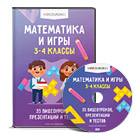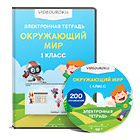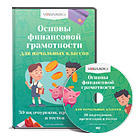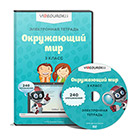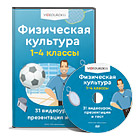Конспект уроку
з англійської мови
у 3 класі
на тему Housе
Вчитель англійської мови
The lesson is based on the textbook '' English 3'' O. Karpiuk, Unit 2
Date:
Class: 3C
Subject of the lesson: A House
Objectives: 1.to encourage pupils to speak about the house;
2. to develop pupils' reading, speaking, listening and writing skills;
3. to present and practise the prepositions of place on the left/right;
4. to develop pupils' ability to work in pairs;
5. to motivate pupils to learn English;
Equipment: text books, handouts, posters, computer, video presentation, pictures.
Lesson Procedure
I. Introduction 5хв
1. Greeting.
2. The presentation of the topic and aim of the lesson.
II. Warming-up activity.3хв
The poem "My House"
Speaking about the house.
III. Main part 30 хв
The presentation "In the House"
Listening.
Pre-Listening: speaking about animals and their rooms.
While-Listening: presentation of the song.
Post-Listening: choosing a correct answer (HO1).
3. Presentation and practise of the prepositions of place on the left/on the right
4. Physical Activity " In the middle"
5. Reading.
Pre-Reading: activation of the vocabulary "A House in the Village"
While-Reading: Ex. 3 p. 37.
Post-Reading: speaking about the rooms.
6. Pair work.
7. Writing: HO2.
8. Preposition song.
9. Describing the room
10. Dramatization "The House in the Wood"
11. A game "Where's your house?"
IV. Assessments.7хв
1. Home Assignment.
Ex.2 p.29, WB
2. Summing-up
- summarizing the lesson;
- marks.
Procedure
I. Introduction
1. Greeting
T: Good morning, dear children!
Ps: Good morning, dear teacher!
T: How are you today?
Ps: We are fine, thank you.
2. The presentation of the topic and aim of the lesson.
T: Today we have got an unusual lesson. So, be active, attentive, work together with me and let's enjoy our English lesson.
T: Look, there are a lot of pictures of rooms and posters of houses on the blackboard. So, the topic of our today's lesson is "A House". During our lesson we are going to speak about a house, a flat and rooms. You will sing, work in pairs, act the fairy-tale and do a lot of different interesting activities.
II. Warming-up Activity
1) A poem "My House"
T: Children! Do you remember the poem about the house? Let's recite it together!
T: Great!
2) Speaking about the house
T: - Do you live in a house?
- Do you live in a flat?
- Is your flat big?
- How many rooms are there in your house/flat?
P: - There are 3. (There is 1)
III. Main Part
1. The presentation "In the House"
T: Well! Let's revise the names of the rooms. First of all, meet Freddy. Look at English houses.
T: What room is this?
P1: It is a living-room.
T: …where you and your parents watch TV. Do you watch TV in the living-room?
Ps: Yes, I do.
T: What room is this?
P2: It is a bedroom.
T: where you sleep and play. (It is a bathroom…where you wash every day. It is a kitchen…where your mum cooks for you)
T: Well! Where is Freddy? – In the living room.
T: And what's this?
P1: It is a bed.
T: In what room can you see it?
P1: I can see a bed in the bedroom.
T: What's this?
P2: It's a chair?
T: In what rooms can you see a chair? (sofa, fridge, cooker, mirror)
T: Well done!
2. Listening
Pre-Listening
T: Now we are going to watch a video "The House Song" about such animals as Penguin, Elephant, … and their rooms. Listen to the song and remember where the animals are and what they are doing. Be attentive!
While-Listening
(Watching the video)
Post-Listening
T: Take this card (HO1) choose the correct answer. Danylo, please, read the first question.
3. Presentation and practice of prepositions of place on the right/on the left
T: Children, show me your right hand, please! Thanks. And now show me your left hand, please! Look at the window. The window is on the left. Look at the door or at the wall. It is on the right. Nazar is on the left. Yulia is on the right.
T: What's this?
Ps: It's a house.
T: What rooms are there in the house? Name them!
Ps: (children's room, living-room, bedroom, bathroom, dining-room, kitchen)
T: Thanks.
T: Is the kitchen on the right?
P1: Yes, it is.
T: Is the dining-room on the left?
P2: Yes, it is.
T: Is the living-room on the left?
P3: No, it is not.
T: What room is on the right/left?
T: Where is the bedroom? (the dining-room, kitchen, living-room)
P4: It is on the right (on the left)
T: Great!
4. Physical Activity
T: I think it's time to have a short rest! Stand up all!
In the middle
To the right
In the middle
To the left
Put behind you
Put above
Clap, clap, clap.
5. Reading
Pre-Reading
T: Open your books at page 37 Ex.3. You can see a plan of the village house below the text.
Is it big? – Yes, it is.
How many rooms are there in the house? – There are 6. Name them!
While-Reading
Ex 3 p. 37, SB
(Reading the next "A House in the Village"
Post-Reading
T: Where is the bathroom? - It's on the left.
Where is the kitchen? - It's on the right.
6. Pair Work
T: And now work in pairs. On your desks there are plans of the flats. Make-up short dialogues. Ask each other where the rooms are.
7. Writing
T: Let's do a similar task on the cards. Take a card with the plan of the flat (HO2)
Look at the plan and write the answers to the questions.
8. Preposition Song
T: And now stand up all! Listen, move and sing!
T: Well! Sit down, please!
9. Describing the room
T: Let's descried one of the rooms.
T: What room is it? Is it big? Where is the carpet? It's on the floor.
T: And now let's make up the sentences using the grammar structure there is. For example, there is a ball on the carpet. Andrii, go on… (There is a picture on the wall).
T: Well.
10. Dramatization "The House in the Wood"
T: Children, do you like fairy-tales? – Yes, we do.
Do you remember a fairy-tale "The House in the Wood"? – Yes, we do.
So, let's act it. Where are my actors?
T: Thanks, my little actors!
11. A game "The House in the Wood"
T: Our little friends animals also live in their houses. Let's ask them about their houses. I need 6 children. Danylo, ask little mouse about its house.
P1: Little mouse, little mouse,
Where is your house?
P2: - Mouse: It is under the floor?
- Little cat, little cat,
- Where is your flat? (cat, dog, frog, rabbit, wolf)
12. T: And now let's solve the House crossword. Guess the room.
1. I can sleep in the… (bedroom)
2. I can watch TV in the… (living-room)
3. My mum cooks in the… (kitchen)
4. I can wash my hands in the… (bathroom)
5. I can play with my toys in the… (children’s room)
6. I can eat in the… (dining room)
T: Well done!
IV. Assessments.
1. Home Assignment
T: Your hometask for the next time is Ex.2 p.29 from WB. Open your WB. Have a look at Ex. 2. The task is to look and circle the correct prepositions.
2. Summing up
T: So, children, let's sum up our lesson. Look at the doll's house.
- How many rooms are there?
- Name them!
- Where is the children's room? (kitchen, living-room, bathroom) - It's on the left/right/
T: Thanks a lot. Good job everyone. You were active today. Your marks are…Well done!
T: Stand up! The lesson is over. Good bye, my dear children.
HO
Listening Comprehension
1. Where is Mr. Penguin?
a. He is in the living room
b. He is in the bathroom
c. He is in the bedroom
2. What is Mr. Elephant going?
a. He is reading a book
b. He is taking a bath
c. He is studying English
3. Where is Mr. Lion watching TV?
a. He is watching TV in the kitchen
b. He is watching TV in the living room
c. He is watching TV in the dining room
4. Mr. Brown Bear and Mr. Zebra are…
a. cooking spaghetti and washing the dishes
b. taking a bath and washing the dishes
c. cooking spaghetti and watching TV






